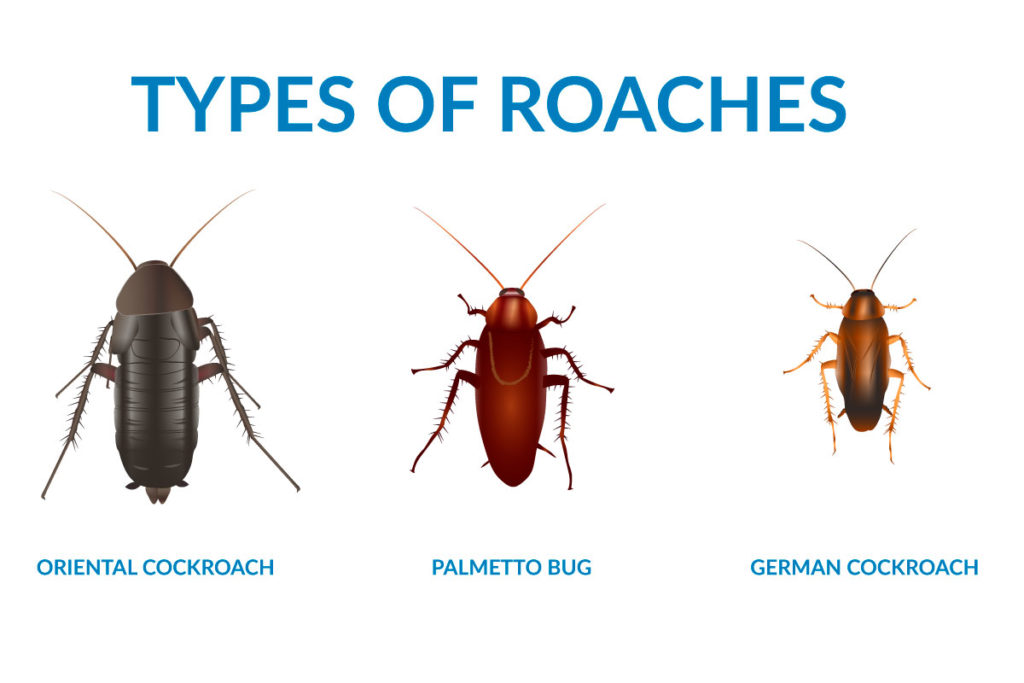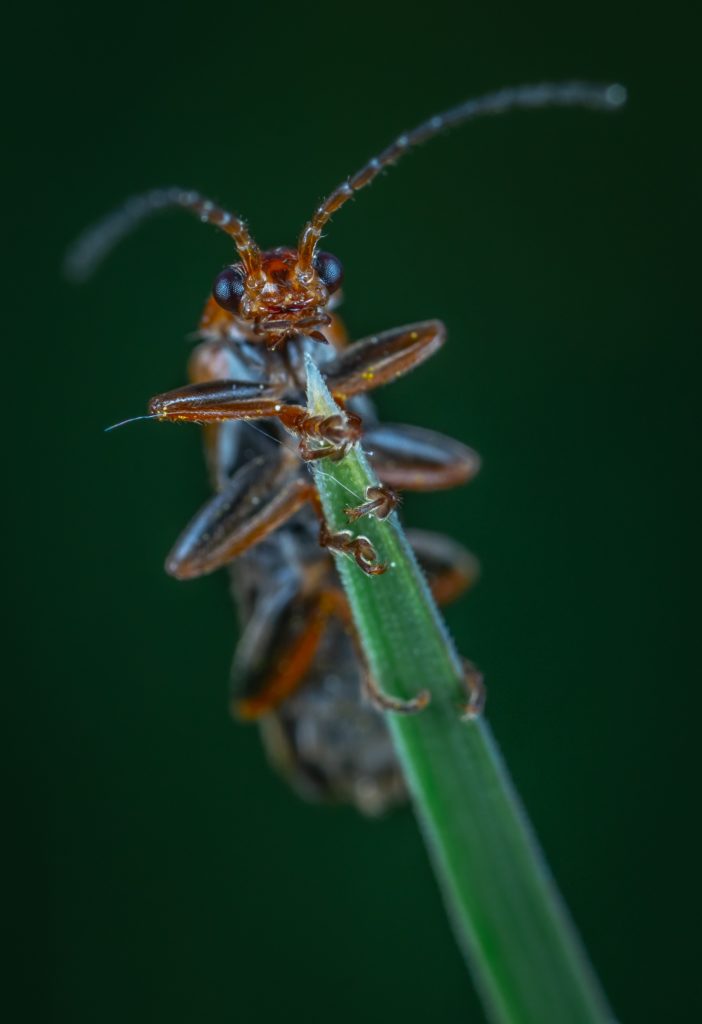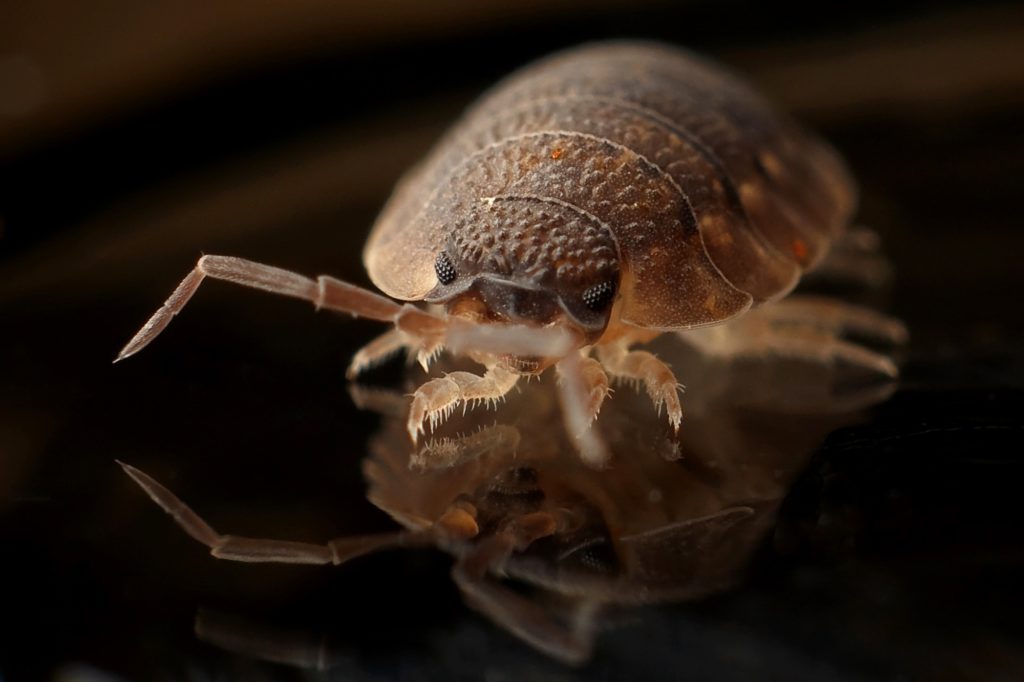If you’ve encountered a cockroach in your home or business, it’s important to know what kind of roach it is to make the best choice for extermination. This beginner’s guide to roaches in South Carolina is a quick way to determine the species of cockroach you’ve encountered and what to do next.
Palmetto Bugs
Palmetto Bugs, also referred to as smoky brown cockroaches, are large (up to nearly 2 inches in length) dark brown cockroaches. The largest type of cockroach found in South Carolina, they also thrive in warm, moist climates. This is why they are so common in South Carolina, Georgia, Florida, and most other southern states.
Palmetto bugs have several motives for seeking shelter indoors. They are known as detrivores, which feed off of pretty much any kind of organic (or decaying) matter. They are likely to venture inside after a rain shower because of their dependency on moisture.
Palmetto Bugs vs. Cockroaches
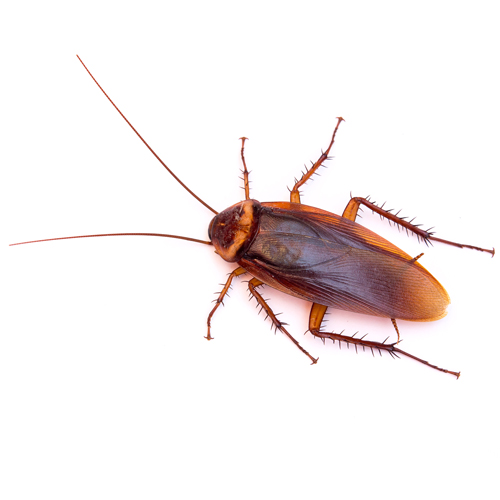
If you spot a Palmetto Bug inside your home, it is not necessarily a sign of a serious infestation. Unlike many other breeds of roach, Palmetto Bugs don’t usually infest a home quickly or for very long due to their dependency on high levels of moisture. Typically, Palmetto Bugs are just looking for warmth, food, and are attracted to light, even from the most immaculately clean of homes.
Tips on Getting Rid of Palmetto Bugs:
- Keep shrubs and bushes trimmed away from the sides of your home
- Set out sticky roach traps under dark, warm areas of your home (such as under the fridge or other large appliances)
- Have a professional exterminator perform quarterly inspections and preventative treatments on your home
German Cockroaches
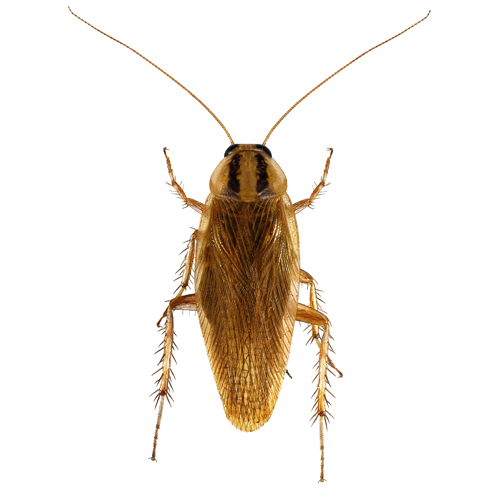
The most common type of cockroach in the United States, German cockroaches can be identified from their small, flat, oval-shaped light brown appearance. They grow to be about ½ inch to 1 inch in length.
German cockroaches seek out warm places that have a good supply of food. They also are able to rapidly reproduce, laying up to 40 eggs at a time, and reach maturity within two months. This kind of roach can become a serious problem and should be addressed immediately by a professional.
Tips on Preventing German Cockroaches:
- Clean up cooking and eating areas frequently
- Don’t leave trash out or in garbage bins for too long
- Use sealed food containers
- Pick up pet food
- Don’t leave used dishes or utensils in your kitchen sink
Oriental Cockroach
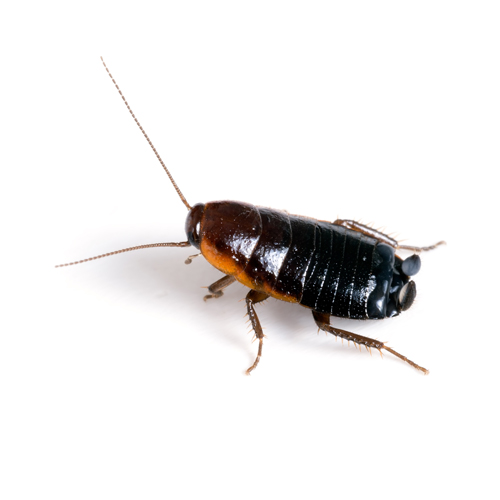
The Waterbug or Oriental Cockroach is defined for its preferred habitat. Unlike some cockroaches, who prefer a dry environment, waterbugs love water. They have wings but are not able to fly like the Palmetto bug. They are a nocturnal species, so they are more active during the nighttime hours.
Oriental cockroaches can be identified by their dark, glossy coloration and wingless appearance. They look more visually similar to beetles than other cockroaches. These cockroaches are attracted to water and enter the home through drains, especially during times of drought.
Tips on Getting Rid of Oriental Cockroaches:
- Seal any cracks or holes in ground-level walls and foundations
- Seal any water leaks and ensure screens fully cover any drains that lead outside
- Remove wet foliage from windows and doors
- Move your garbage bins out of areas with high moisture levels
- Improve ventilation in moist parts of your home
Roach Extermination
If you’ve noticed cockroaches in your home or office more frequently, it may be time to call in a professional exterminator. If roaches are not killed and the building isn’t treated, an infestation is likely to occur, depending on the species of roach. Exclusive Pest Control offers roach extermination services, as well as preventative quarterly treatments. Prevention is the best way to ensure cockroaches cannot make their way in and infest. Contact our team today to schedule a visit and we can help you rest assured that roaches stay out of your home.
